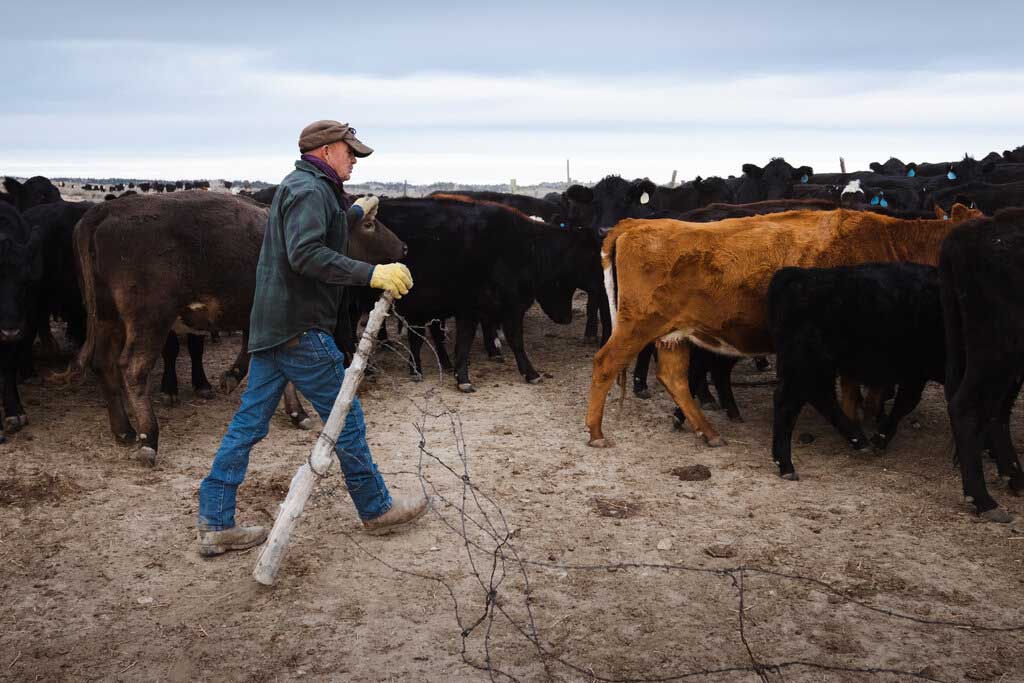Photographs by Erin Schaff
- Dec. 27, 2021Updated 8:13 a.m. ET
SHEPHERD, Montana — Judging from the prices at supermarkets and restaurants, this would appear to be a lucrative moment for cattle ranchers like Steve Charter.
America is consuming more beef than ever, while prices have climbed by one-fifth over the past year — a primary driver for the growing alarm over inflation.
But somewhere between American dinner plates and his 8,000-acre ranch on the high plains of Montana, Mr. Charter’s share of the $66 billion beef cattle industry has gone missing.
A third-generation cattle rancher, Mr. Charter, 69, is accustomed to working seven days a week, 365 days a year — in winter temperatures descending to minus 40, and in summer swelter reaching 110 degrees.
ADVERTISEMENTContinue reading the main storyhttps://f23e900b496ab93551730c31f2a2ab31.safeframe.googlesyndication.com/safeframe/1-0-38/html/container.html
On a recent morning, he rumbled up a snow-crusted dirt road in his feed truck, delivering a mixture of grains to his herd of mother cows and calves. They roam a landscape that seems unbounded — grassland dotted by sagebrush, the horizons stretching beyond distant buttes.
Mr. Charter has long imagined his six grandchildren continuing his way of life. But with no profits in five years, he is pondering the fate that has befallen more than half a million other American ranchers in recent decades: selling off his herd.




“We are contemplating getting out,” Mr. Charter said, his voice catching as he choked back tears. “We are not getting our share of the consumer dollars.”
ADVERTISEMENTContinue reading the main story
The distress of American cattle ranchers represents the underside of the staggering winnings harvested by the conglomerates that dominate the meatpacking industry — Tyson Foods and Cargill, plus a pair of companies controlled by Brazilian corporate owners, National Beef Packing Company and JBS.
Since the 1980s, the four largest meatpackers have used a wave of mergers to increase their share of the market from 36 percent to 85 percent, according to the U.S. Department of Agriculture.
Their dominance has allowed them to extinguish competition and dictate prices, exploiting how federal authorities have weakened the enforcement of laws enacted a century ago to tame the excesses of the Robber Barons, say antitrust experts and advocates for the ranchers.
One landmark piece of legislation, the Packers & Stockyards Act of 1921, was adopted by Congress to “safeguard farmers and ranchers” — among other market participants — from “unjustly discriminatory and monopolistic practices.”
Understand the Supply Chain Crisis
- The Origins of the Crisis: The pandemic created worldwide economic turmoil. We broke down how it happened.
- Explaining the Shortages: Why is this happening? When will it end? Here are some answers to your questions.
- Gifts Arrive on Time: Fears that a disrupted supply chain could wreak havoc on the holidays turned out to be wrong. Here’s why.
- Car Shortages: The limited supply of vehicles is forcing some to go to great lengths to find them, including traveling hundreds of miles.
- A Key Factor in Inflation: In the U.S., inflation is hitting its highest level in decades. Supply chain issues play a big role.
Today’s record high beef prices are most directly reflective of scarce stocks, another manifestation of the Great Supply Chain Disruption accompanying the pandemic. The initial spread of the coronavirus swept through slaughterhouses, killing scores of workers, sickening thousands and halting production. That caused shortages of beef.
But the shock landed atop decades of takeovers that closed slaughterhouses. The basic laws of economics suggest what happens when the packers cut their capacity to process beef: The supply is reduced, increasing consumer prices. At the same time, fewer slaughterhouses limits the demand for live cattle, lowering prices paid to ranchers for their animals — an advantage for the packers.
“Their goal is to control the market so that they can control the price,” said Marion Nestle, a professor of food studies and public health at New York University. “The pandemic exposed the consequences of the consolidation of the meat industry.”







